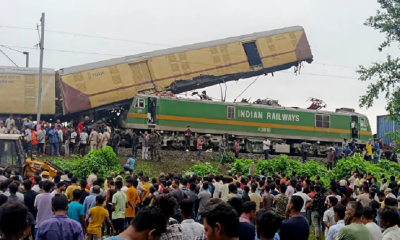Latest News
India quicks lead demolition of Ireland on fizzing pitch

New York’s second match as a T20I venue was a lot like its first: low-scoring and brutal. Two days after South Africa bowled Sri Lanka out for 77 here, India bowled Ireland out for 96. A different strip was used for this game, but the bounce was just as inconsistent, and batting just as difficult, if not outright dangerous.
India’s selection was spot-on – they picked four fast bowlers including Hardik Pandya, and two spin-bowling allrounders to lengthen their batting, which meant they left Kuldeep Yadav on the bench. They didn’t need all that batting in the end, as Rohit Sharma and Rishabh Pant helped them cross the line with 46 balls remaining, but the packed pace attack proved extremely useful. Arshdeep Singh, Mohammed Siraj, Jasprit Bumrah and Hardik picked up 8 for 81 between them, extracting seam movement and up-and-down bounce right through an Ireland innings that lasted just 16 overs.
As good as those performances were, though, this match will be remembered for the conditions. Batters from both teams took body blows – Rohit retired hurt on 52, soon after being struck on the arm – and by the time India wrapped up their win, their thoughts may have gone ahead to June 9 at the same venue, and what kind of pitch they may have to play Pakistan on.
The first two overs gave enough of a clue of how this pitch would behave, with both Arshdeep and Siraj extracting inconsistent bounce. One ball from Arshdeep – seam-up rather than a slower ball or cutter – bounced a second time before reaching wicketkeeper Pant, but most of the inconsistency was up rather than down, with one ball forcing Pant into a leaping, overhead, goalkeeper-style save.
Extra bounce brought India their first wicket, Paul Stirling top-edging a heave across the line at the start of the third over.
By the end of that over, Arshdeep had taken out both openers. He was finding ways to mix up his stock inswinger to the right-hander with balls that kept going with the left-armer’s angle across them, and one of these away-slanters bowled Andy Balbirnie, as he stayed leg-side of the ball and tried to steer one down to third.
By the end of the powerplay, Ireland were still only two down, but Harry Tector had already been hit on the glove and the thigh pad and was batting on 1 off 10. That became 4 off 15 before a nasty short ball from Bumrah hurried him, and he ended up gloving the attempted pull into his helmet and then to the fielder at short extra-cover.
By then they had also lost Lorcan Tucker, bowled trying to drive a nip-backer from Hardik.
India kept getting the length ball to nip around and the short-of-length ball to climb, and Ireland kept losing wickets. Even the introduction of spin didn’t stem the collapse, as Barry McCarthy was caught and bowled by an Axar Patel ball that stuck in the pitch. At 50 for 8, Ireland were in danger of falling short of their lowest T20I total – 6 against West Indies during the 2010 edition of this tournament.
They eventually crossed that mark, with Gareth Delany’s risk-taking coming off – where that of his team-mates’ mostly didn’t – in a 14-ball 26 that carried Ireland to 96.
Rohit and Virat Kohli came out swinging – perhaps they reckoned that the new ball and powerplay field restrictions gave them the best chance of quick runs – and came away with contrasting outcomes.
Kohli fell early, caught on the deep-third boundary while charging at Mark Adair and looking to slap him over the covers.
Rohit enjoyed two slices of early luck – Balbirnie put down a tough chance at second slip in the first over, off Adair, and an inside-edge in the second over, off Josh Little, ran away for four past the stumps – and carried on to score his 30th T20I fifty. The pitch remained treacherous, and Rohit’s control percentage hovered in the 40s for most of his innings, before climbing to 51 by the time he retired hurt. But he hit some telling blows too, most notably two trademark pulls off successive balls from Little that brought up his 599th and 600th sixes in international cricket. Before that, he also went past 4000 runs in T20Is.
Pant looked more fluent than Rohit, indeed as fluent as anyone could have looked on this pitch, and hit three sixes and two fours while scoring an unbeaten 36 off 26. He took a hit to the elbow and one to the shoulder, and his response to the latter blow summed him up as a cricketer and character: he finished the match off the next ball, reverse-scooping McCarthy for six over the wicketkeeper.
Brief scores:
India 97 for 2 in 12.2 overs (Rohit Sharma 52, Rishabh Pant 36*; Mark Adair 1-27, Ben White 1-06) beat Ireland 96 in 16 overs (Gareth Delany 26; Hardik Pandya 3-27, Jasprit Bumrah 2-06, Arshdeep Singh 2-35, Mohammed Siraj 1-13, Axar Patel 1-03) by eight wickets
Foreign News
Deadly border fighting breaks out between Pakistan and Afghanistan
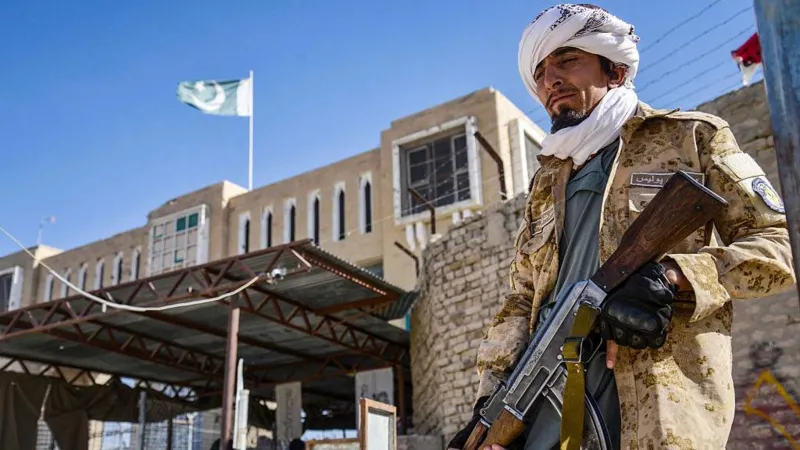
Border clashes have erupted again between Pakistan and Afghanistan’s Taliban forces, with each sides accusing the other of breaking a fragile ceasefire.
Residents fled the Afghan city of Spin Boldak overnight, which lies along the 1,600-mile (2,600 km) border between the two countries.
A medical worker in the nearby city of Kandahar told BBC Pashto that four bodies had been brought to a local hospital. Four other people were wounded. Three were reportedly wounded in Pakistan.
There has been sporadic fighting between the two countries in recent months, while Afghanistan’s Taliban government has also accused Pakistan of carrying out air strikes inside the country.
Both sides have confirmed they exchanged fire overnight but each blamed the other for initiating the four hours of fighting.
Mosharraf Zaidi, a spokesperson for Pakistan’s Prime Minister Shehbaz Sharif, accused the Taliban of “unprovoked firing”.
The statement continued: “An immediate, befitting & intense response has been given by our armed forces. Pakistan remains fully alert & committed to ensuring its territorial integrity & the safety our citizens.”
Meanwhile, a Taliban spokesperson said Pakistan had “once again initiated attacks” and said it was “forced to respond”.
Residents on the Afghan side of the border said the exchange of fire started at around 22:30 (18:00 GMT) on Friday.
Footage from the area showed a large number of Afghans fleeing on foot and in vehicles.
Ali Mohammed Haqmal, head of Kandahar’s information department, said Pakistan’s forces had attacked with “light and heavy artillery” and civilian homes had been hit by mortar fire.
The latest clashes came less than two months after both sides agreed to a ceasefire mediated by Qatar and Turkey.
It ended more than a week of fighting in which dozens were killed – the worst clashes between Pakistan and the Taliban since the group returned to power in 2021 – though tensions have remained high.
The government in Islamabad has long accused Afghanistan’s ruling Taliban of giving shelter to armed groups which carry out attacks in Pakistan.
The Taliban government denies the accusation and has accused Pakistan of blaming others for their “own security failures”.
The Pakistan Taliban have carried out at least 600 attacks on Pakistani forces over the past year, according to the Armed Conflict Location & Event Data Project.
Last week delegations from both sides met in Saudi Arabia for a fourth round of negotiations on a wider peace settlement, but did not reach an agreement.
Sources familiar with the talks told BBC News that both sides had agreed to continue with the ceasefire.
[BBC]
Latest News
Advisory for severe lightning for the Western and Sabaragamuwa provinces and Galle and Matara districts
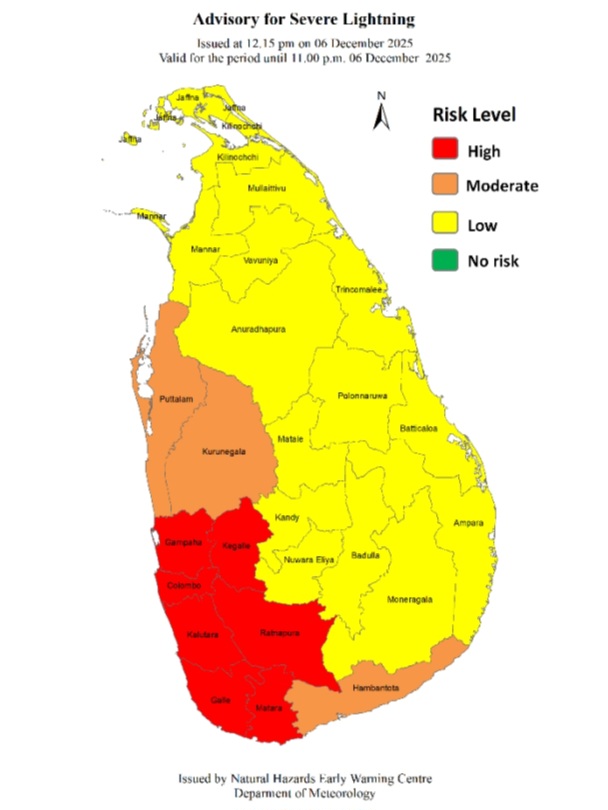
Advisory for Severe Lightning Issued by the Natural Hazards Early Warning Centre at 12.15 p.m. 06 December 2025 valid for the period until 11.00 p.m. 06 December 2025.
The public are being cautioned that thundershowers accompanied with severe lightning are likely to occur at some places in the Western and Sabaragamuwa provinces and in Galle and Matara districts.
There may be temporary localized strong winds during thundershowers.
The General public is kindly requested to take adequate precautions to minimize damages caused by lightning activity.
ACTION REQUIRED:
The Department of Meteorology advises that people should:
Seek shelter, preferably indoors and never under trees.
Avoid open areas such as paddy fields, tea plantations and open water bodies during thunderstorms.
Avoid using wired telephones and connected electric appliances during thunderstorms.
Avoid using open vehicles, such as bicycles, tractors and boats etc.
Beware of fallen trees and power lines.
For emergency assistance contact the local disaster management authorities.
Latest News
Justin Greaves 202*, Kemar Roach 58* anchor West Indies to epic draw
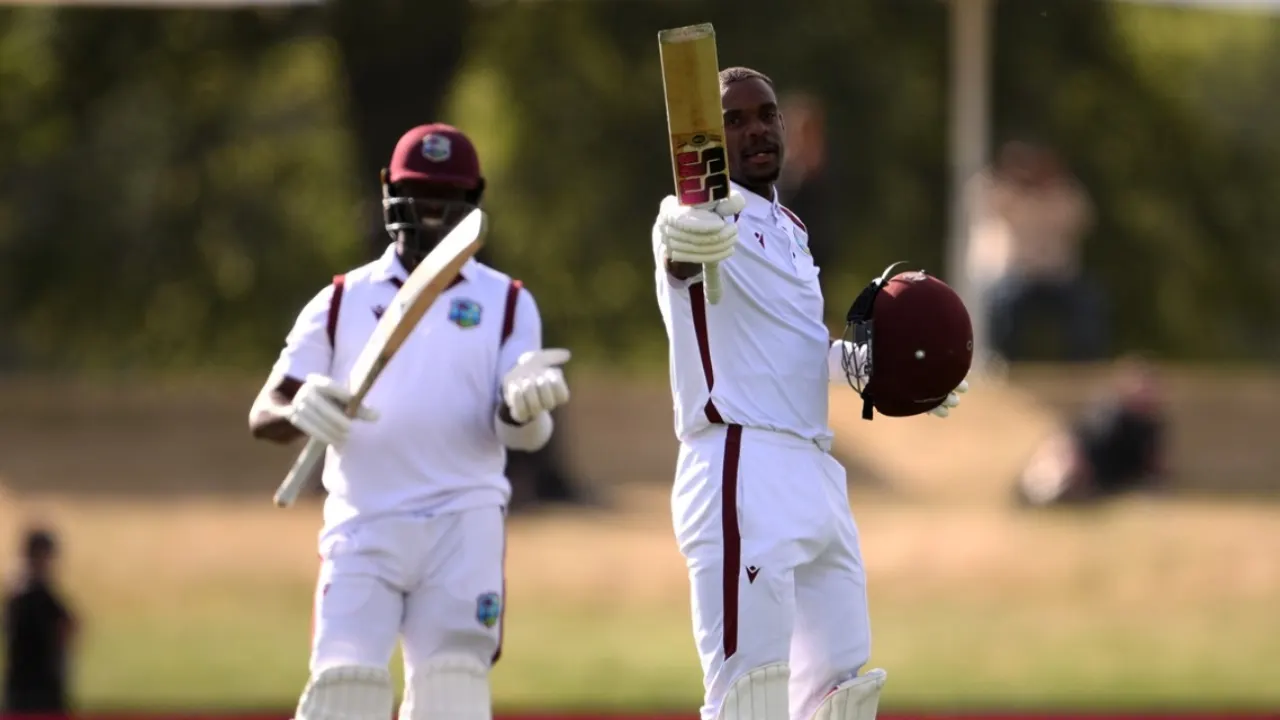
An epic stonewall from Justin Greaves had him face more than half the deliveries of his 12-Test career in this one innings alone, as West Indies pocketed their first points in their sixth Test of the 2025-27 World Test Championship cycle in Christchurch. The 163.3 overs they eventually faced is the longest fourth-innings in Tests for West Indies in 95 years.
Having played the supporting role to Shai Hope through their 196-run stand that rescued West Indies from 92 for 4 on Day 3, Greaves became the heartbeat of the innings once Hope (140) and Tevin Imlach fell in quick succession.
He brought up a stunning maiden Test double ton in the penultimate over when he sliced Jacob Duffy over backward point to pocket what was to be only his second boundary in all of the final session as his colleagues stood up to give him a standing ovation.
He finished 202 not out, having faced 388 deliveries, turning an innings that began with the typical artistic flair and flamboyance into a steely knock full of purpose and grit. Greaves wore more blows on the body than he could count, batted more deliveries than he had in his career, and reined in his natural instincts with single-minded purpose and determination.
His effort led to an astonishing turnaround from the first hour of the day, when West Indies stumbled to 277 for 6 in a mammoth chase of 531. A depleted New Zealand attack down to two weary frontline pacers in Zak Foulkes and Jacob Duffy, fancied their chances. But Greaves found an able ally in Kemar Roach, the 37-year-old veteran, who batted like his life depended on it in his comeback Test.
Roach made 58 not out – his highest first-class score – while facing 233 deliveries himself. Astonishingly, he made just 5 off the last 104 deliveries he faced during a dramatic final two hours of play even as the sun baked down hard on an increasingly docile Hagley Oval surface. Yet that should not take away from the epic rearguard from Hope, Greaves, and Roach.
The frustration of not being able to separate Greaves and Roach during the second and third sessions was evident, as New Zealand’s bowlers were ground into the dust. They would also have felt robbed when Roach appeared to have nicked Michael Bracewell to Tom Latham behind the stumps – though perhaps only having themselves to blame for burning all their reviews.
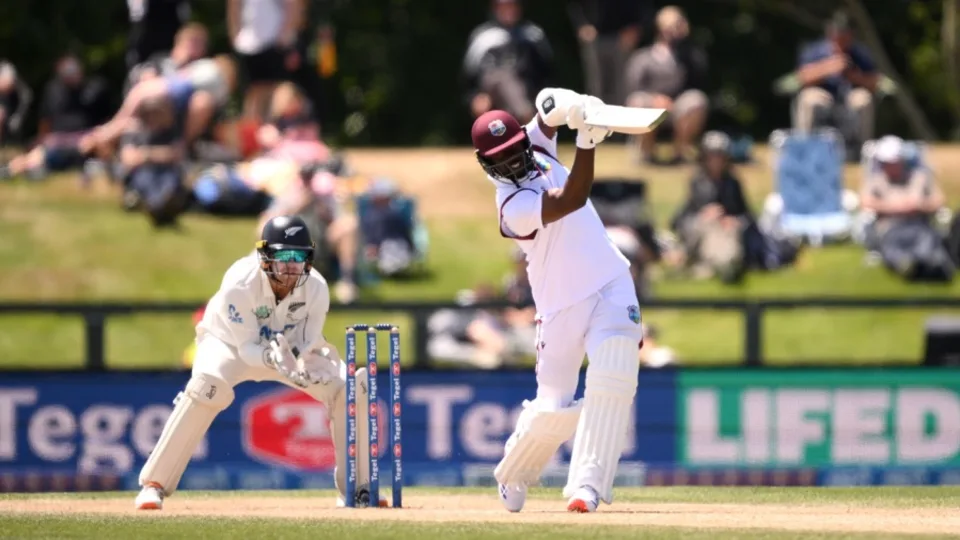
Even so, it was the thinnest of spikes that made it all the more challenging for Alex Wharf, the on-field umpire, who only a few minutes earlier made a cracking decision by turning down what everyone believed was an obvious inside-edge onto the pad to the slips, again off Bracewell. Replays showed Wharf had made a terrific call.
As admirably as Roach played, he also maximised his opportunities. On 30, he was put down by Foulkes at backward square leg when he attempted an expansive sweep off Bracewell. On 35, Blair Tickner, subbing for Matt Henry, missed a direct hit at the bowler’s end from a few yards away at short mid-on as Roach was misjudging a run.
Then on 47 came the most obvious chance, when Roach attempted to loft Bracewell had him nearly hole out to mid-on. Except, Glenn Phillips, the other sub, saw Tickner looking to intercept the ball from mid-off and palm it away.
With those three chances firmly behind him, Roach buckled down and offered a dead bat to anything that came his way against Bracewell. Foulkes and Duffy tried to ruffle him with the short ball from around the wicket, only for him to duck and weave.
Going into the final session, it became increasingly evident West Indies weren’t going to be enticed by the prospect of chasing down the 132 runs they needed in 31 possible overs. This clarity allowed them to approach the session with dead defence being the sole primary aim, even as Greaves began to tire and suffer cramps that needed medical attention at different times.
Not even the possibility of an impending double century enticed Greaves into attempting anything loose, even if Tom Latham gave him the open invitation to drive Bracewell against the turn through the covers. This wasn’t perhaps a risk not worth taking given how easily West Indies’ lower order collapsed in the first innings.
But long before a draw became the only possibility, even as New Zealand tried to attack with six fielders around the bat in the final session, Hope and Greaves pocketed runs at every available opportunity as the hosts rushed through their first six overs with part-time spin in a bid to take the second new ball quickly.
But even after they took it, there was hardly any assistance for the bowlers. Hope defended comfortably off a length with neither Foulkes nor Duffy consistently able to challenge the outside edge consistently. The occasional misfields, like – Rachin Ravindra letting one through his legs for four, or Will Young overrunning a throw while backing up – added to the sense of raggedness New Zealand had begun to feel.
A breakthrough lifted them shortly after drinks when Duffy dug in a short ball down leg, which Hope gloved behind, only for Latham to throw himself to his left and pluck a stunner from his webbing to end a marathon. Then came a second when Imlach was trapped by a nip-backer.
They may have thought then it was just a matter of time. It could’ve been had they not reprieved Roach, but those reprieves proved even more costly given they only had two fast bowlers and two part-timers available – all of them going full throttle to the limit – despite not getting much out of the surface.
In the end, the manner in which West Indies earned the draw may prove far more valuable. Above all, it was a day that reminded everyone of the slow-burn magic only Test cricket could deliver.
Brief scores:
West Indies 167 (Shai Hope 56, Tagenarine Chanderpaul 5; Matt Henry 3-43, Zak Foulkes 2-32, Jacob Duffy 5-34) and 457 for 6 (Justin Greaves 202*, Shai Hope 140, Kemar Roach 58*; Jacob Duffy 3-122) drew with New Zealand 231 (Kane Williamson 52, Michaell Bracewell 47, Jayden Seales 2-44, Kemar Roach 2-47, Ojay Shields 2-34, Justin Graves 2-35) and 466 for 8 dec (Ravindra 176, Tom Latham 145; Kemar Roach 5-78, Ojay Shields 2-74)
[Cricinfo]
-

 News7 days ago
News7 days agoWeather disasters: Sri Lanka flooded by policy blunders, weak enforcement and environmental crime – Climate Expert
-
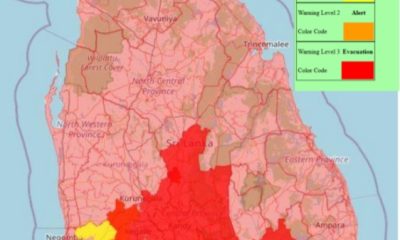
 Latest News7 days ago
Latest News7 days agoLevel I landslide RED warnings issued to the districts of Badulla, Colombo, Gampaha, Kalutara, Kandy, Kegalle, Kurnegala, Natale, Monaragala, Nuwara Eliya and Ratnapura
-
News4 days ago
Lunuwila tragedy not caused by those videoing Bell 212: SLAF
-

 Latest News5 days ago
Latest News5 days agoLevel III landslide early warnings issued to the districts of Badulla, Kandy, Kegalle, Kurunegala, Matale and Nuwara-Eliya
-

 News2 days ago
News2 days agoLevel III landslide early warning continue to be in force in the districts of Kandy, Kegalle, Kurunegala and Matale
-

 Features5 days ago
Features5 days agoDitwah: An unusual cyclone
-

 Latest News5 days ago
Latest News5 days agoUpdated Payment Instructions for Disaster Relief Contributions
-

 Latest News6 days ago
Latest News6 days agoLandslide Early Warnings issued to the Districts of Badulla, Colombo, Gampaha, Kalutara, Kandy, Kegalle, Kurunegala, Matale, Moneragala, Nuwara Eliya and Ratnapura






